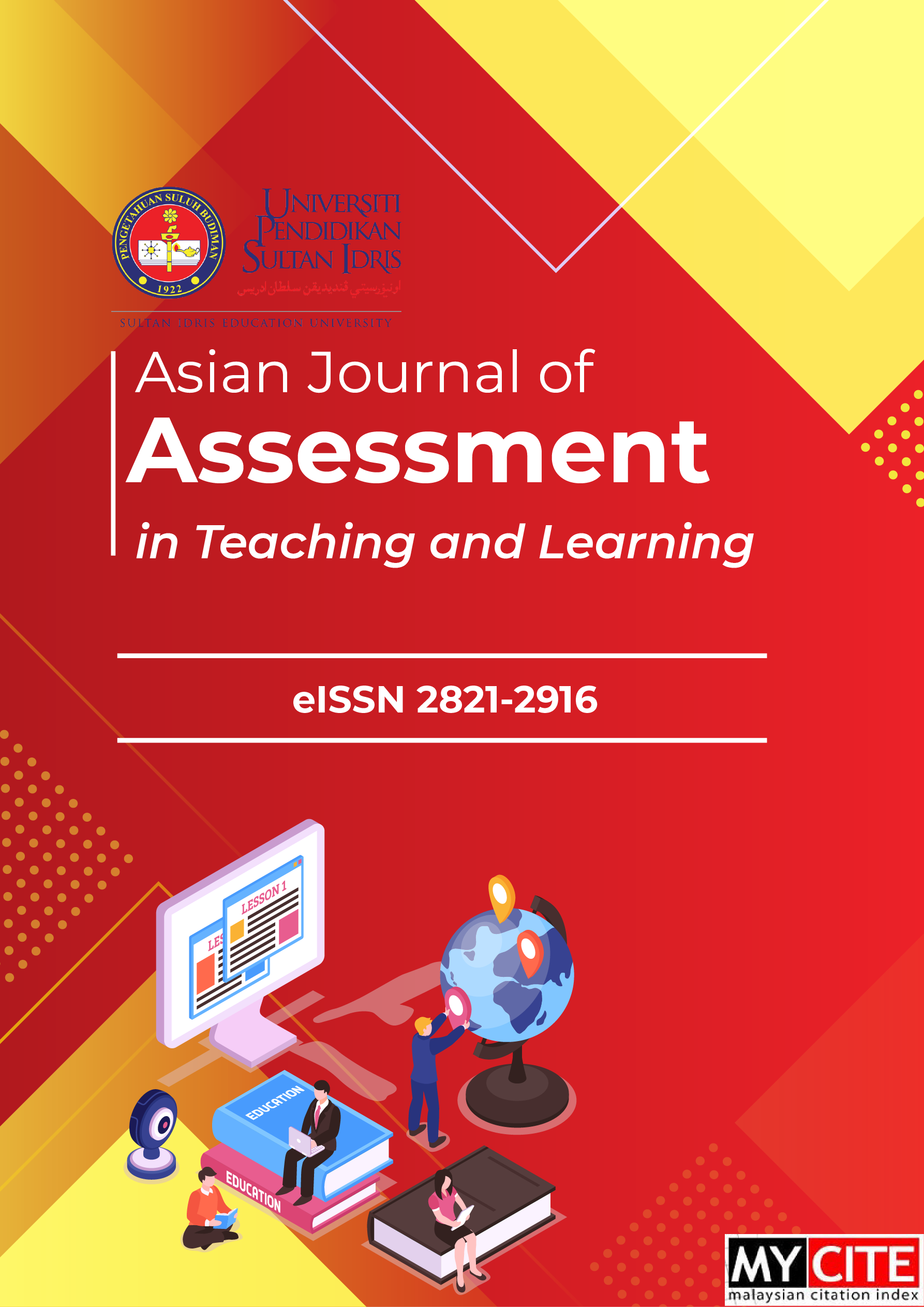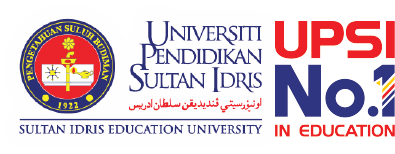Computational thinking – Essential and pervasive toolset
DOI:
https://doi.org/10.37134/ajatel.vol10.1.3.2020Keywords:
Computational Thinking, Education, Technology, Programming, TeachersAbstract
Education 21st century is all about enfolding digital technology. The theme “Higher Education 4.0: Knowledge, Industry and Humanity”, mandated from Malaysia’s former Higher Education Minister Datuk Idris Jusoh. The minister identified that universities have to be trained to adapt and change the curriculum so that graduates are capable to fill in jobs which are yet to arise. This Fourth Industrial Revolution 4.0 as part of the call to revamp the Malaysia higher education system. There are nine Malaysia future-proof skills that has been listed under Ministry of Higher Education module on Framing Malaysian Higher Education 4.0 – future-proof talents. There are creativity and innovation; Holistic Entrepreneurial and Balanced; Resilience; leadership; Compassion and mindfulness; values and ethics; flexibility and adaptability; critical thinking and problem solving and finally communication and language proficiency. The above mentioned points are future-proof skills sets for Malaysian graduates. There are three additional future-proof attributes which are lifelong learners, multiple intelligence and competencies and computational thinking. This qualitative study explored the significant area in the recent digital technology and development hence, it will be one of the crucial knowledge that should be acquired by everyone and anyone not only in Malaysia but in the whole wide world. Technology is moving rapidly and educators have to keep up with this fast pace. This issue attentively allied with the terminology pioneered by Jeanette Wing that is called computational thinking (CT). The interviewed is carried out among eleven Malaysian pre-service teachers and existing teachers under PGCE (Post Graduate Certificate in Education) program in the United Kingdom, to study on their attitudes towards the idea of learning programming. Through the interviews, the researcher was able to record and interpret trainee teachers’ perceptions of the motivation to learn programming. The data were then analysed and categorised before the final codes were determined to get the final output using thematic code analysis technique. The findings show that learning programming is possible for those who had no computing background thus answered one of the aim of this study that CT skills could be adopted in any fields and more creators or designers will be established compared to the passive users. There was a rational consideration of the value of learning programming to their professional skills and the studies have asked whether understanding such will raise the participants’ engagement with learning a programming language and thus assist them to acquire CT skill.
Downloads
References
Abas, A. (2016). Computational thinking skills to be introduced in school curriculum next year. News Straits Times, p. 164732.
Azlee, B. Y. A. (2016). Lack of info on coding in schools prompts concern among educators.
Balan, P., & Kalavally, V. (2012). Enhancing Student Motivation in Process Control via Interactive Learning Tools. … for Education (T4E), 2012 IEEE Fourth …, 176–179. https://doi.org/10.1109/T4E.2012.38
Bocconi, S., Chioccariello, A., Dettori, G., Ferrari, A., Engelhardt, K., Kampylis, P., & Punie, Y. (2016). Developing Computational Thinking in Compulsory Education. Implications for policy and Practice. Proceedings EdMedia 2016. https://doi.org/10.2791/792158
Boulton, H., & Hramiak, A. (2013). Cascading the use of Web 2.0 technology in secondary schools in the United Kingdom: identifying the barriers beyond pre-service training. Technology, Pedagogy and Education, 23(2), 151–165. https://doi.org/10.1080/1475939X.2013.802994
Brennan, K., & Resnick, M. (2012). New frameworks for studying and assessing the development of computational thinking. … of the 2012 Annual Meeting of the Retrieved from http://pdf.thepdfportal.com/PDFFiles/26416.pdf
Brennan, K., & Resnick, M. (2013). Stories from the scratch community: connecting with ideas, interests, and people. In Proceeding of the 44th ACM technical symposium on Computer science education - SIGCSE ’13 (p. 463). https://doi.org/10.1145/2445196.2445336
Daily, S., Leonard, A., & Jörg, S. (2014). Dancing alice: exploring embodied pedagogical strategies for learning computational thinking. Proceedings of the 45th …, 1–6. Retrieved from http://dl.acm.org/citation.cfm?id=2538917
Guzdial, M. (2003). Programming Environments for Novices Specializing Environments for Novices Logo and its Descendants : The Goal of Compu- tational Literacy, 1–24.
Huang, C., Ho, P.-C., & Chung, S.-M. (2008). Computer Game Programming Course for Art Design Students by Using Flash Software. 2008 International Conference on Cyberworlds, 710–713. https://doi.org/10.1109/CW.2008.120
Jenkins, T. (2001). T EACHING P ROGRAMMING – A J OURNEY FROM T EACHER TO M OTIVATOR. Anuual LTSN-ICS Conference in London.
Kalganova, T. (2001). Improving students motivation by means of multimedia. Retrieved from http://dspace.brunel.ac.uk/handle/2438/2520
Novianti, N., & Suparman, S. (2019). Educational game design to improve reasoning skills. Asian Journal of Assessment in Teaching and Learning, 9(2), 1–8.
Radošević, D., Orehovački, T., & Lovrenčić, A. (2009). New approaches and tools in teaching programming. Proceedings of 20th Central …, 49–57. Retrieved from http://bib.irb.hr/datoteka/427643.CECIIS2009_Radosevic_Orehovacki_Lovrencic.pdf
Resnick, M., Silverman, B., Kafai, Y., Maloney, J., Monroy-Hernández, A., Rusk, N., … Silver, J. (2009). Scratch. Communications of the ACM. https://doi.org/10.1145/1592761.1592779
Ridzuan, F., & Jawawi, D. N. A. (2016). Evaluation of Computer Programming Teaching Tools for Secondary Schools Students. International Journal of Software Engineering and Technology, 03(1), 1–9.
Saari, E.M., Blanchfield, P., & Hopkins, G. (2016). Computational thinking: A tool to motivate understanding in elementary school teachers. Communications in Computer and Information Science (Vol. 583). https://doi.org/10.1007/978-3-319-29585-5_20
Saari, Erni Marlina, Blanchfield, P., & Hopkins, G. (2015). Learning computational thinking through the use of flash action scripts: Preparing Trainee Elementary School Teachers for Teaching Computer Programming. CSEDU 2015 - 7th International Conference on Computer Supported Education, Proceedings, 2, 75–84.
https://doi.org/10.5220/0005442600750084
Saari, Erni Marlina, Blanchfield, P., & Hopkins, G. (2016). Computer Supported Education. (S. Zvacek, M. T. Restivo, J. Uhomoibhi, & M. Helfert, Eds.), Computer Supported Education (Vol. 583). Cham: Springer International Publishing. https://doi.org/10.1007/978-3-319-29585-5
Seiter, L., & Foreman, B. (2013). Modeling the learning progressions of computational thinking of primary grade students. Proceedings of the Ninth Annual International ACM Conference on International Computing Education Research - ICER ’13, 59. https://doi.org/10.1145/2493394.2493403
Shute, V. J., Sun, C., & Asbell-Clarke, J. (2017). Demystifying computational thinking ARTICLE INFO. Educational Research Review. https://doi.org/10.1016/j.edurev.2017.09.003
Takemura, Y. (2007). Analyzing the Motivation of the Students in the Art Faculty for Learning Programming Department of Social Welfare and Psychology, (Icalt), 0–2.
Tondeur, J., van Braak, J., Sang, G., Voogt, J., Fisser, P., & Ottenbreit-Leftwich, A. (2012). Preparing pre-service teachers to integrate technology in education: A synthesis of qualitative evidence. Computers & Education, 59(1), 134–144. https://doi.org/10.1016/j.compedu.2011.10.009
Utting, I., Cooper, S., & Kölling, M. (2010). Alice, greenfoot, and scratch--a discussion. ACM Transactions on …, 10(4), 1–11. https://doi.org/10.1145/1868358.1868364.
Vaca-Cardenas, Azucena, L., Bertacchini, F., Tavernise, A., Gabriele, L., Valenti, A., … Bilotta, E. (2015). Coding with Scratch: The design of an educational setting for Elementary pre-service teachers. Proceedings of 2015 International Conference on Interactive Collaborative Learning, ICL 2015, (September), 1171–1177. https://doi.org/10.1109/ICL.2015.7318200
Wing, J. M. (2006, March 1). Computational thinking. https://doi.org/10.1145/1118178.1118215
Wing, J. M. (2008). Computational thinking and thinking about computing. Philosophical Transactions. Series A, Mathematical, Physical, and Engineering Sciences, 366(1881), 3717–3725. https://doi.org/10.1098/rsta.2008.0118
Yadav, A., Hong, H., & Stephenson, C. (2016a). Computational Thinking for All : Pedagogical Approaches to Embedding 21st Century Problem Solving in K-12 Classrooms. TechTrends, 10–13. https://doi.org/10.1007/s11528-016-0087-7
Yadav, A., Hong, H., & Stephenson, C. (2016b). Computational Thinking for All: Pedagogical Approaches to Embedding 21st Century Problem Solving in K-12 Classrooms. TechTrends, 60(6), 565–568. https://doi.org/10.1007/s11528-016-0087-7
Downloads
Published
How to Cite
Issue
Section
License
Copyright (c) 2020 UPSI Press

This work is licensed under a Creative Commons Attribution-NonCommercial-ShareAlike 4.0 International License.





